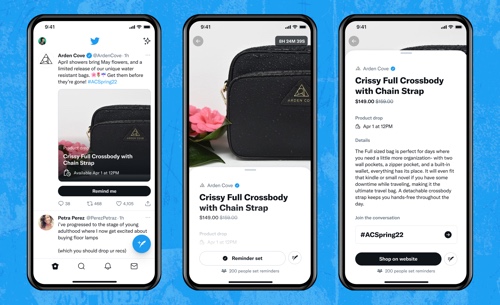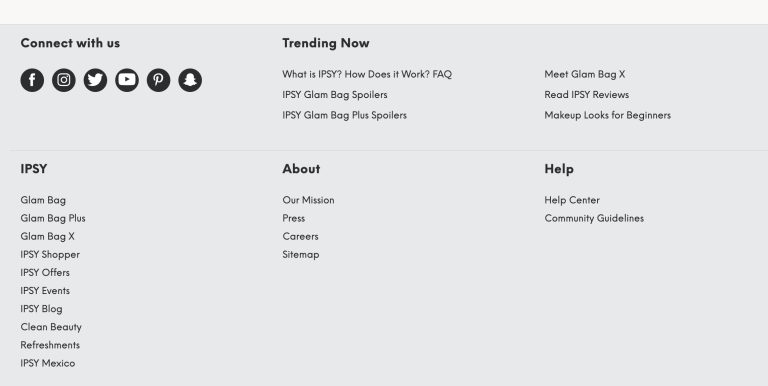
So I set up an entirely new infrastructure for the production of iron weight plates in Vietnam. And as far as I know, I’m the first to do it for export out of that country. There is some domestic production there, but not much export. I went from the ground up and built that supply chain there. It took a lot of time, money, and effort.
Amazon’s not nearly as dominant here as in the U.S. It’s a lot easier in Canada and a lot less expensive than in the U.S. To this day, our split is about 70-percent Canada and 30-percent U.S., although the U.S. share is growing rapidly.
Khoozani: Our big unique is we’re the best value for the money. There are competitors with thicker and stronger steel and maybe a better fit and finish. But my barbells are the best dollar for dollar. We also offer a lot of unique designs that are typically unavailable to home users. For example, one of our best-selling products is the Belt Squat Machine for under ,000. Only one other company sells it for that price. And everything else on the market is commercial grade, which is very expensive.
And the cost of shipping containers, if you can get them, has tripled or quadrupled since the beginning of the pandemic. Lots of dirty tricks, such as middlemen selling VIP space on the containers for an extra ,000. Crazy stuff.
Khoozani: In the beginning, I was focused on top-line revenue, which we all know is a silly number. I was trying to sell wherever I could — retail stores, gyms, home gyms, whatever. Three years ago, we looked closely at our numbers. It was clear that we needed to focus on the home gym user. That’s our bread and butter. That’s who we need to cater to. The segment has the best margins and the fewest warranty issues. So, yes, our focus is the home user.
Khoozani’s perseverance has paid off. His company is thriving, having retooled its supply chain, logistics, and inventory planning. Khoozani: It’s a lot easier and cheaper to ship from Canada to the U.S. than vice-versa. There’s a difference in the duty and tax regulations, for whatever reason. I can ship anything less than 0 in value to the U.S., and it goes right through. No duty, no nothing.
Then one of our freight carriers created an open API. A developer used it to build a live freight-quoting plugin for WooCommerce. Now I can offer customers freight quoting at the checkout, which is a huge benefit.
Bandholz: You’re singing my notes, right up my alley. Let’s talk about the crazy demand for your products due to Covid. How do you keep customers happy?
Most everyone who works for us is into weight lifting. Many of our warehouse guys are big and physical.
Bandholz: We’re all rich in life. This show’s not about the monetary value or get rich quick. Your site is Bells of Steel. How challenging has it been to get equipment? I’m a weightlifter myself. Pretty much everywhere has been sold out.
Khoozani: Good and bad. I was complaining about it just a few hours ago. I started on BigCommerce and remained on that platform for maybe five years. I can’t recall why I switched to WooCommerce. I think BigCommerce had jacked their rates. Perhaps I didn’t like dealing with them any longer. And I met a developer who sold me on WooCommerce.
Bandholz: Where can people learn more about you and Bells of Steel?
“We ran into two giant hiccups,” Khoozani told me. “Everything we sell comes from specialty suppliers. Some of the bigger players, such as the chain stores, gobbled up all the capacity and raw materials. Three of our main suppliers dropped us.”
And we don’t sell on Amazon. Here in Canada, maybe 10 percent of our pre-pandemic sales came from Amazon. And then the pandemic hit. I chose then not to give up a single percentage point to an entity that does nothing for my brand when there’s just obscene demand. And I don’t know if we’re ever going back. I like keeping all those customers on my platform and giving them the best experience I can.
We’ve completely reshaped how we order and how we plan our inventory and logistics.
The level of sophistication we can do with WooCommerce is such a competitive advantage. For example, one of my leading products is called the garage gym builder. It walks you through choosing a bench, choosing a rack, and choosing a bar. And as far as I can tell, there’s not a good comparison to it on Shopify or other platforms. That product generates most of our revenue. We use a plugin, a WooCommerce composite builder.
At the beginning of the pandemic, some large players, such as the chain stores, gobbled up all the capacity and raw materials. Three of our main suppliers dropped us. Just, “See you later. Go get your weight plates from somewhere else.” But we couldn’t get them anywhere else because nobody was taking on new customers.
Kaevon Khoozani: Theoretically, yes. I could be poor soon, but it’s going good now.
Eric Bandholz: Selling gym equipment during the pandemic might make you one of the richest people in ecommerce.
Khoozani: We ran into two giant hiccups. The first was that everything we sell comes from specialty suppliers. We don’t use trade agents. We buy barbells from a factory that only does barbells and nothing else. For some of those factories, we are a bigger customer. For others, we’re not.
WooCommerce has a bunch of functionality. It’s so far ahead. It’s a little clunkier, but it has way more features, and it’s way more cost-effective. But the downside is it takes much more maintenance. There are many more bugs. And we struggle with speed, always.
We’re much better now at tracking containers and planning inventory. We’re working much closer with our suppliers, asking, “How can we maximize your efficiency? If we buy 100 SKUs, is that going to expedite the manufacturing and shipping?”
But I don’t think I’ll ever switch. We’re hoping to launch a new site in the next month or two. It should be a lot faster. If I were starting over, I probably would go with Shopify. But I’m glad we’re on WooCommerce now.
It’s not worth it, fighting tooth and nail on the Amazon marketplace.
Khoozani: For sure. And the demand hasn’t really stopped. This month will be our biggest ever.
Khoozani: Canada has about the same population as California. Bells of Steel has been around since 2010. There were no competitors up here at the time. So it was an advantage. Imagine being the first company in California to sell bumper plates on the internet. We were able to capture a ton of the Canadian market and a lot of organic Google traffic.
In other words, Khoozani faced obscene demand with no inventory. What was his solution?
He and I recently discussed those developments and more. Our entire audio conversation is embedded below. The transcript that follows is edited for clarity and length.
Since then, it’s been a double-edged sword. I love that I can do anything with it, totally in my control. The thought of Shopify or BigCommerce dictating what I sell is not good.
Bandholz: Whenever Beardbrand ships into Canada, it costs an arm and a leg. It’s tremendously cost-prohibitive to serve Canadian consumers. What about shipping from Canada into the U.S.?
Khoozani: Our website is BellsOfSteel.com. To get in touch with me personally, send a message on the website. Somebody will direct it my way.
Bandholz: When I got into ecommerce, shipping heavy items was something I avoided. You sell products designed to be heavy. How do you manage that shipping process?
Another great feature is quoting freight prices in the checkout process. We use freight carriers to deliver products to customers. But it’s been a pain to quote freight charges because none of those companies had a system, like UPS does, for example.
Khoozani: It’s tricky. UPS has high thresholds for package size and weight. Quite a few of our products are designed specifically to fit within those UPS guidelines. A lot goes into our packaging design. As for fulfillment, I use a 3PL in Indianapolis. I also ship from my own warehouse and staff in Calgary, Canada.
It’s been tough. We learned the hard way. Before the pandemic, we were doing a lot of pre-selling. We would tell customers they could buy it now we would ship in the same month. Then Covid hit. We got burned pretty hard. We couldn’t fulfill those orders with containers sitting in port for weeks, unable to offload.
Bandholz: Shifting direction, what’s your ideal customer?
Bandholz: Where are your products manufactured?
Bandholz: You’re in Canada. It’s a small market compared to the U.S. Does your business depend on sales to U.S. consumers?
“I set up an entirely new infrastructure for the production of iron weight plates in Vietnam. As far as I know, I’m the first to do it for export out of that country. It took a lot of time, money, and effort.”
Imagine selling home gym equipment online at the onset of the pandemic. Athletic clubs were closed. Consumers were stuck in their houses. According to Kaevon Khoozani, the founder of Canada-based Bells of Steel, the demand for weight-training equipment was “obscene.”
Also, WooCommerce’s product bundle system is very sophisticated. It works in conjunction with WooCommerce composite.
Khoozani: Everything’s made in China and, more recently, Vietnam. It all comes in containers directly to Calgary and Indianapolis.
The second hiccup was a severe container shortage from Asia to North America. For years we used a reliable freight forwarder who set everything up. We didn’t have to pay the freight until the product arrived. Then came Covid. It was a frantic scramble, calling forwarders every day, asking, “You got space? You got space? You got space?”
Bandholz: Your site’s built on WooCommerce. How do you like it?
But you’ll get dinged on anything and everything shipping from the U.S. to Canada. I won’t order stuff from the States directly because I’ll end up with these crazy duty bills, or it gets stuck at customs for three weeks, or it never gets through at all.
Bandholz: A lot of big companies sell weight training equipment. How do you compete?






